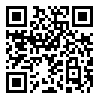BibTeX | RIS | EndNote | Medlars | ProCite | Reference Manager | RefWorks
Send citation to:
URL: http://ijcm.ir/article-1-74-en.html
Studied rocks are located in Dehaj-Meiduk area north of Shahrbabak.There are eight porphyry intrusive bodies in this region including Meiduk, Parkam, Iejoo, Segino, Narkoh, Ayoub ansar, Sara and Keder that Meiduk, Parkam, Iejoo nad Segino are productive and Narkoh, Ayoub ansar and Sara are barren. The intrusive bodies are composed of quartzdiorite and granodiorite. The intrusive bodies are mainly composed of plagioclase, amphibole, biotite, Pyroxene, alkali-feldspar and quartz. Biotite is one of the most ferromagnesian mineral of these rocks. Compositionally, all biotites (barren and productive intrusive bodies) are situated between annite and siderophylite. Biotites in barren intrusive bodies are primary magmatic but biotites in productive intrusive bodies are primary, reequilibrated and altered. The study of oxidation and reduction state of their source magma by biotite chemistry indicates the crystallization in oxidation conditions and high oxygen fugacity. Therefore biotite rich intrusive bodies in Dehaj-Meiduk area complex are I-type or related to magnetite series and the estimated oxygen fugacity imply oxidation magma and its formation in convergent plate boundary. Emplacement or crystallization temperature for intrusive bodies in Dehaj-Meiduk area based on, Ti-in-Biotite thermometer, has been achieved between 548 to 574 ºc for productive intrusive bodies and 749 to 805 ºc for barren intrusive bodies. Also Al-barometer accounts that the pressure of biotites crystallization is 0.22 to 0.78K bar for productive intrusive bodies and 1.15 to 1.94 Kbar for barren intrusive bodies. The AlT content of biotite is 2.3 to 2.9 for productive intrusive bodies and higher than 3.3 for barren intrusive bodies. These data confirm that productive intrusive bodies has a good ability for copper mineralization based on Uchida et al. Method. Finally, the fluid related to productive intrusive bodies have log (fH2O / fHCl) higher than the fluid related to barren intrusive bodies.
| Rights and permissions | |
 |
This work is licensed under a Creative Commons Attribution-NonCommercial 4.0 International License. |



